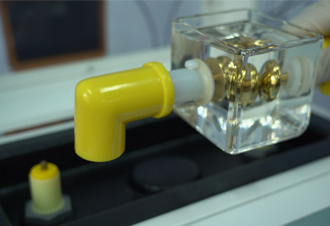 English
English


Equipment for Determining the Pour Point of Fluids in Laboratory Settings
Understanding Pour Point Test Equipment
Pour point testing is a crucial process in evaluating the low-temperature properties of lubricants, fuels, and other petroleum products. It determines the lowest temperature at which a fluid will flow, which is vital for the performance of these materials in cold environments. The pour point is a critical parameter in industries such as automotive, aviation, and oil and gas, where temperature variations can impact the usability and safety of fuels and lubricants. To assess this property accurately, specialized equipment is required.
Pour point test equipment typically comprises a sample cup, a temperature control unit, and a measuring device, all designed to ensure precise temperature management and measurement. The sample cup, often made from materials that do not interfere with the sample's properties, holds the fluid being tested. It's essential for the cup to maintain consistent thermal conditions to accurately reflect the pour point characteristics of the fluid.
The temperature control unit plays a pivotal role in the testing process. It cools the sample slowly and continuously while monitoring the temperature. This gradual cooling is critical as many fluids have a complex response to temperature changes. Advanced pour point test equipment often incorporates a programmable cooling system that allows for controlled rates of temperature reduction. This ensures that the pour point can be determined with high accuracy, avoiding any premature solidification that might incorrectly indicate a higher pour point.
pour point test equipment

Once the sample reaches the desired temperature range, the measuring device or visual observation mechanism assesses the fluid's ability to flow. Generally, the sample is agitated using a calibrated apparatus to see if it can be disturbed and still maintain liquidity. If the fluid does not flow after a certain agitation, the temperature at which this occurs is marked as the pour point. This effective combination of equipment and methodology ensures that the results produced are reliable and reproducible.
Modern pour point test equipment may also feature digital interfaces, data logging capabilities, and software integration to enhance the testing process. Such advancements enable testers to read results more efficiently and compare data over time, which can be instrumental when assessing the quality of batches during manufacturing processes.
In conclusion, pour point test equipment is essential for determining the low-temperature flow characteristics of petroleum-based products. The accuracy of these tests relies heavily on the quality and precision of the equipment used, including temperature control and measurement systems. As industries continue to prioritize efficiency and safety, the development and integration of advanced pour point testing technologies will play a significant role in ensuring that lubricants and fuels meet the necessary performance standards for various applications, particularly in extreme temperature conditions.
-
Differences between open cup flash point tester and closed cup flash point testerNewsOct.31,2024
-
The Reliable Load Tap ChangerNewsOct.23,2024
-
The Essential Guide to Hipot TestersNewsOct.23,2024
-
The Digital Insulation TesterNewsOct.23,2024
-
The Best Earth Loop Impedance Tester for SaleNewsOct.23,2024
-
Tan Delta Tester--The Essential Tool for Electrical Insulation TestingNewsOct.23,2024





